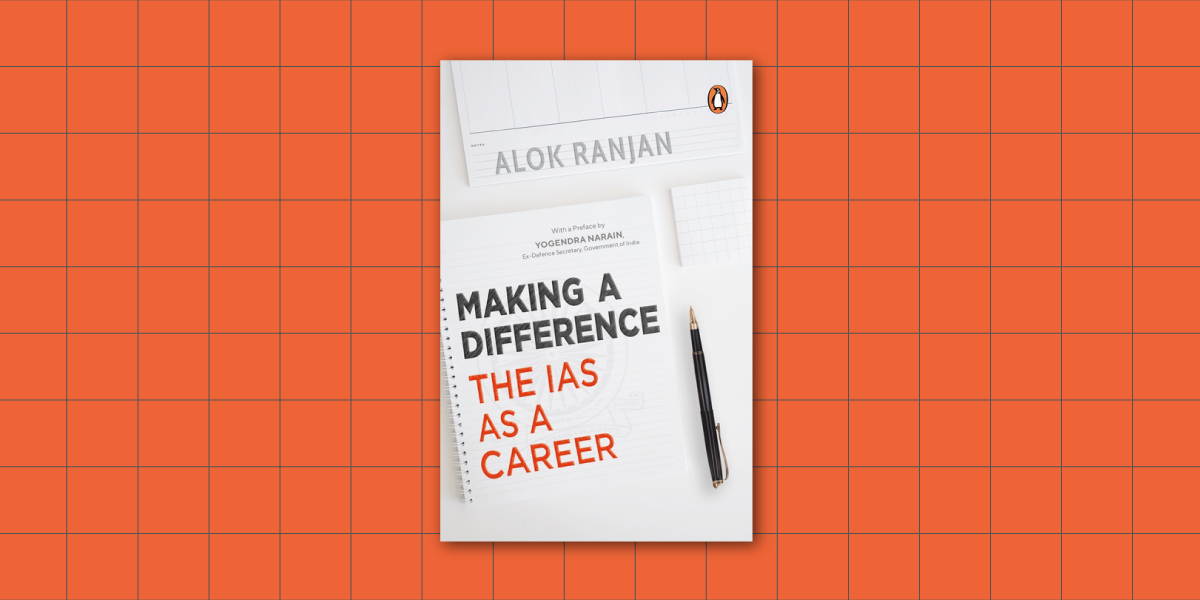
Alok Ranjan’s Making a Difference provides an insider’s unique perspective on the IAS and the role it plays in public administration and development. Here’s an excerpt from the book about how this service evolved over a period of time.
*

Making a Difference
Alok Ranjan
I often hear people talk about the Indian Civil Service (ICS) and compare the IAS unfavourably with it. It is important to understand in this context that the nature of the job, responsibility, working environment and expectations of the people from the IAS differed hugely from that of the ICS in the colonial days. It is, undoubtedly, the successor service to the ICS but it is not the same and cannot be the same.
For those who are unstinted in their praise for the ICS, it is a sobering thought to be told that this hallowed service was considered neither Indian nor Civil nor a service by the great leaders of the nationalist movement. Yet it would be interesting to trace the journey of the ICS, its origins and contribution, and then try to understand how it evolved into the IAS. It would be relevant to examine how the IAS itself is evolving and undergoing change in its character, nature, diversity and reputation.
In the eighteenth century, the East India Company gradually spread its tentacles through most of India and from a professed trading company, it became an agency of governance on behalf of Britain. Naturally, administering such a huge country needed the Army and the Civil Service. Teenaged men were recruited into the East India Company Civil Service and they spent their time in India collecting revenue for the company and maintaining law and order. In 1800, Governor-General Lord Wellesley decided that teenaged recruits would have to undergo special training in India. For this, he decided to set up the college of Fort William in Calcutta, but this proposal had not been approved by the company’s Directors in London.
The Directors did however establish a college in Hertford Castle in England in 1806 and then moved to Haileybury three years later. The selection of candidates to Haileybury was by a process of nomination by the Directors. They had to be seventeen years old and come from distinguished families. There was no question of selection based on merit; family pedigree was considered the most important attribute. People joined the civil service for adventure and with a spirit of altruism. The salaries and the pensions offered were very attractive. After nomination and before joining Haileybury, the candidates had to take some kind of a written and oral exam where they were tested in history and mathematics as well as language. The foundational course at Haileybury was for two years and the candidate studied mathematics, philosophy, literature, law, history, general economics as well as Indian languages. Sanskrit, Persian and Arabic were also taught. It is a different matter that these languages were not of much use when the civil servant landed in India. They had to administer in the vernacular languages and learn them as soon as they were posted to the field. The educational atmosphere at Haileybury was not very demanding and most candidates focused on just clearing the exams. There were lectures for about two hours everyday and a lot of free time was available to socialize and indulge themselves in drink. There was, however, the minority who studied hard and were known as ‘Steadies’, much like the ‘Keen Type Probationers (KTP)’ of our time who took the training at the Mussoorie academy very seriously. Though discipline was lax at Haileybury, a feeling of esprit de corps was very visible and close friendships were formed which lasted for a long time. Haileybury continued till 1857 when the British Government took over the governance of India from the East India Company, and introduced a system of selection into the ICS on merit, through a competitive examination.
The British Government made this change as they felt that selection by patronage would no longer meet the needs of governance and that meritorious candidates were required. Initially, the ICS drew a majority of its entrants from the Universities of Oxford and Cambridge but this soon changed. The Macaulay Committee laid out the guidelines of the selection which prescribed the maximum age limit initially as twenty-three but subsequently brought it down to twenty one. The committee designed an exam that demanded strong factual memory and a concentrated study of academic texts. The graduates had to study beyond their university syllabi to prepare for the exam and much like today, establishments like Crammer came up to prepare candidates for the exam.
There was a lot of criticism of this ‘Crammer’ system and many felt that unsuitable candidates were being selected just by preparing some questions that happened to appear in the examination paper. Still, many were of the view that the selection system provided better candidates than the earlier system that was based on patronage. This was followed by the Lord Salisbury Reforms which decided that candidates would take the exam at the school leaving age (seventeen to nineteen years) and then they would be on probation, studying in a university for two years. This system lasted from 1879–1892 but some leaders were of the opinion that candidates were being selected at too raw an age and they did not take their probation period in the university seriously. Another criticism was that it deterred Indian candidates from taking the exam.
Since the 1830s, Indians had joined the Government of India (GOI) in the capacity of Deputy Collectors, Deputy Magistrates and bore the burden of governance supervised by a handful of British ICS men. Lord Cornwallis in the eighteenth century had excluded Indians from high positions in the government. The 1853 Act opened up the service to all natural-born subjects of the crown. However, it was near impossible for Indians to compete as it was expensive and there were religious considerations which did not allow Indians to go to London to attempt the exam. Satyendra Nath Tagore was the first Indian to have been selected. In 1869, four Indians qualified, including Surendra Nath Banerjee and Romesh Chandra Dutt. The Indian National Congress in 1885 appealed for a simultaneous exam at a centre in India. In 1886, the government appointed a Public Service Commission which raised the age limit for the ICS to twenty-three years, enabling more Indians to write the exam. Even then, till 1910, only 6 percent of the ICS were Indians.









